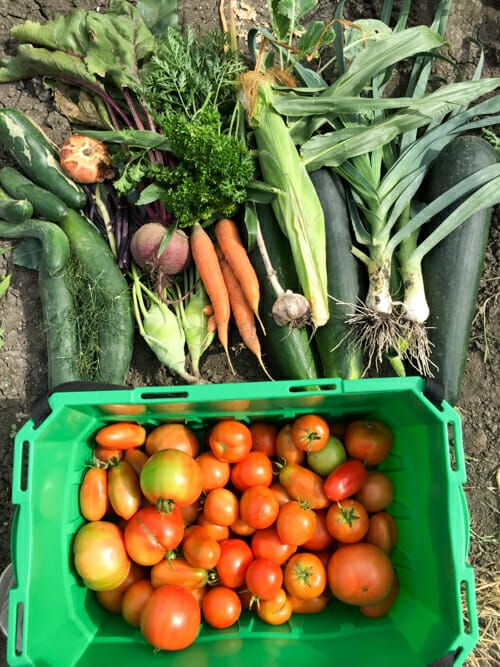Typical Harvest Time of Prairie Vegetables
So you’ve done some big picture thinking about your garden with the help of Six Questions Before Planning Your Vegetable Garden . Now it’s time to dig a little deeper (gardening pun intended!).

This year, timing is the critical factor in my decision making. Being away for 6 weeks in July and August narrows my choices of what to plant. By comparing my schedule with the typical harvest time of common veggies, I can make better choices about what to plant and avoid planting veggies that will be ready to harvest while I’m away.
Here’s a look of when common veggies are typically ready to harvest in our prairie, zone 2b/3 climate. Of course, there are early and late varieties and things like temperature, moisture, soil conditions, wind, planting time, weed control, and so on that will impact exactly when your veggies will be ready to harvest. Remember, “days to maturity” is a best guess – it may be 2-3 weeks off! Get used to it – that’s gardening!
|
June |
July |
August |
September |
| RadishLettuceSpinach
Asparagus Swiss Chard Rhubarb Garlic Scapes Beet Greens Onion Greens Herbs – Chives
| Peas (early July)Bush Beans (green, yellow, burgundy wax beans)Beets
Broccoli Cucumber Zucchini Kohlrabi Kale Swiss Chard Carrots Cabbage Onions Herbs – Basil, Dill, Parsley, Cilantro, Thyme, Sage, etc.
| Broad Beans Pole Beans Beets Corn Onions Garlic Sweet Peppers Hot Peppers Tomatoes Cabbage Carrots Cauliflower Celery Cucumbers Melons Potatoes Leeks Summer Squash (zucchini, patty pan, etc.) Herbs – Oregano, Thyme, Mint, etc.
| CarrotsTomatoesPeppers
Dried Beans Beets Winter Squash (butternut, hubbard, spaghetti, etc.) Pumpkins Swiss Chard Potatoes Spinach (second crop) Radishes (second crop) Lettuce (second crop)
|
When I compare my schedule for the summer with this harvest schedule, it’s clear which veggies aren’t going to make it into my garden this year.
- Peas
- Broccoli
- Cauliflower
- Celery
- Kohlrabi
- Cabbage
- Corn
- Tomatoes (early varieties)
It’s tough to cut these great veggies from this year’s roster. But, why plant peas if you can’t harvest them when they’re young, tender and oh so sweet. And corn – well , we all know what overripe corn tastes like.
In addition to the harvest time, I also took into consideration the maintenance factor of some of these veggies. For example, the crucifers like broccoli, cauliflower, kohlrabi, and cabbage may have harvest times that are a little more flexible, but based on my experience, they require more care prior to harvesting. Asking my non-gardening husband to check on them, watch for things like flea beetles, root flies and cabbage moths, blanch any cauliflower heads by gently wrapping the outer leaves around the newly forming heads, or putting on row covers just didn’t seem like a wise move. It’s best if I plant something equally delicious, requires less care and will be more likely to be ready for harvesting when I’m around.
I’m going to miss you my sweet peas, tender broccoli and garden fresh corn!

